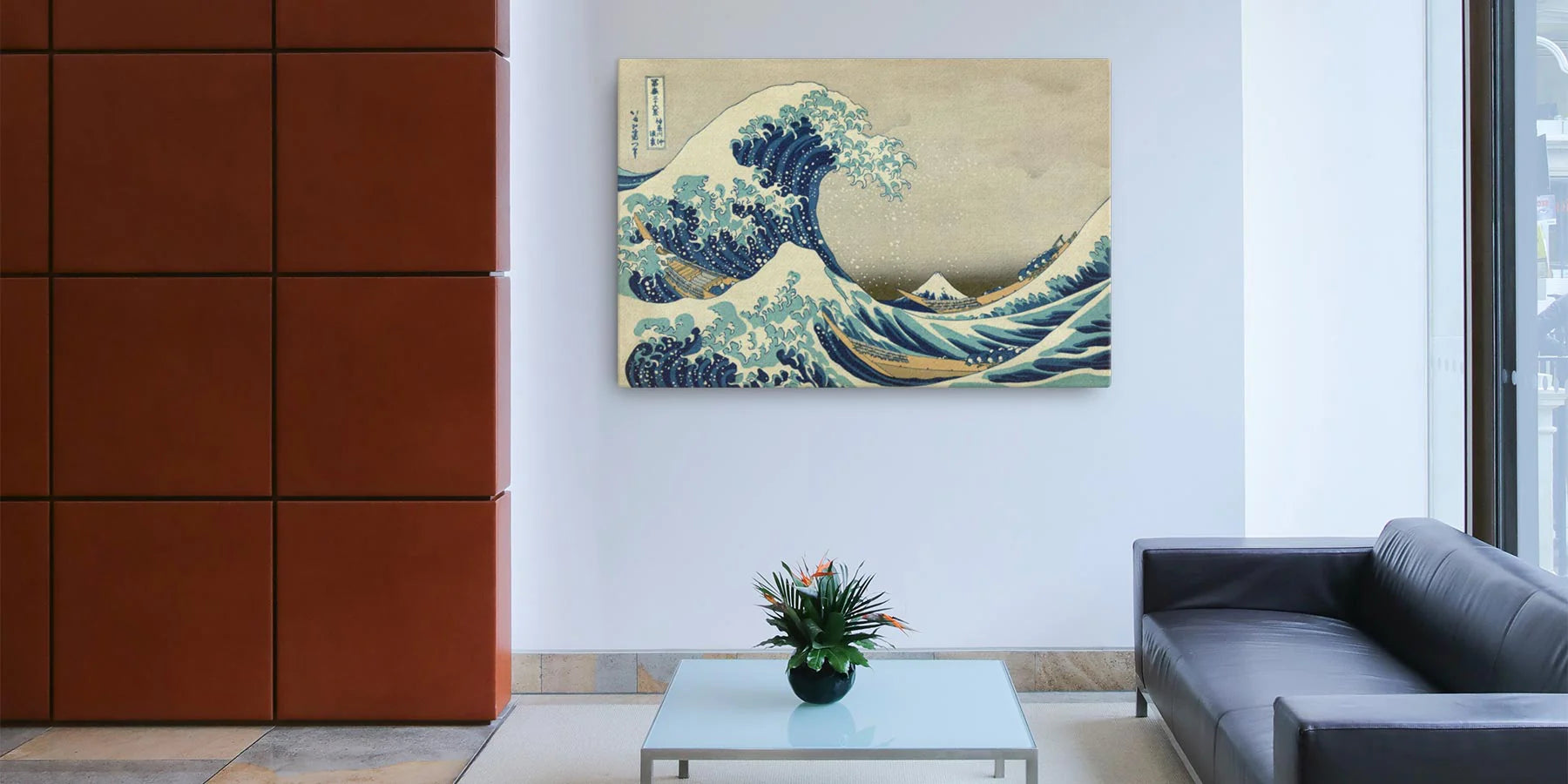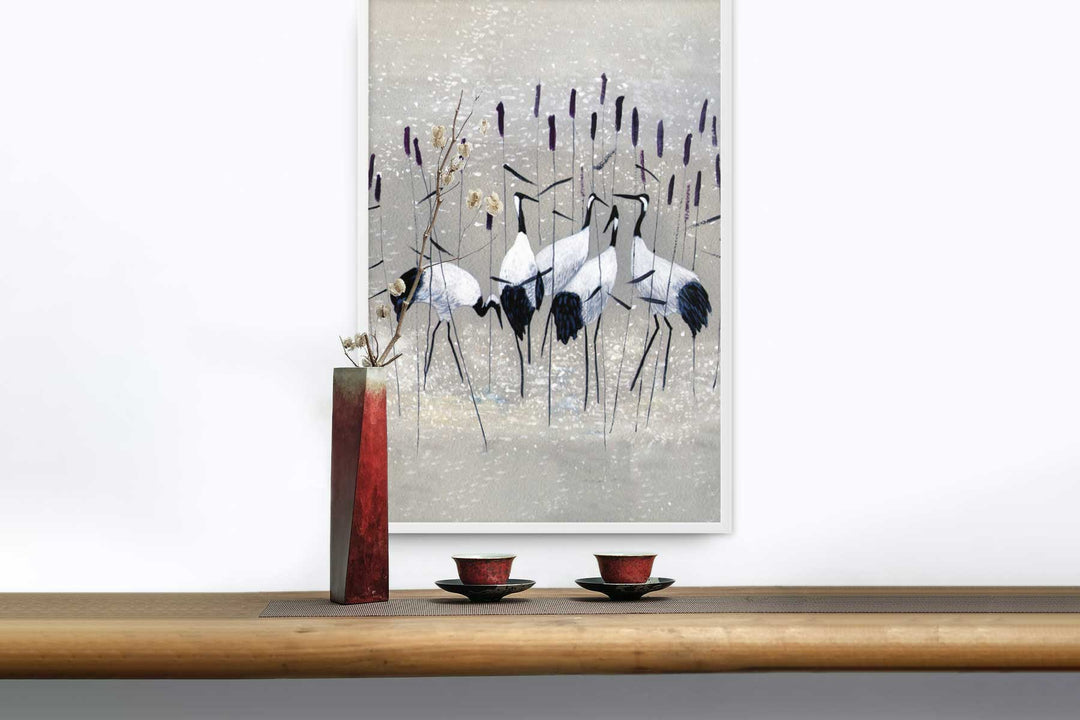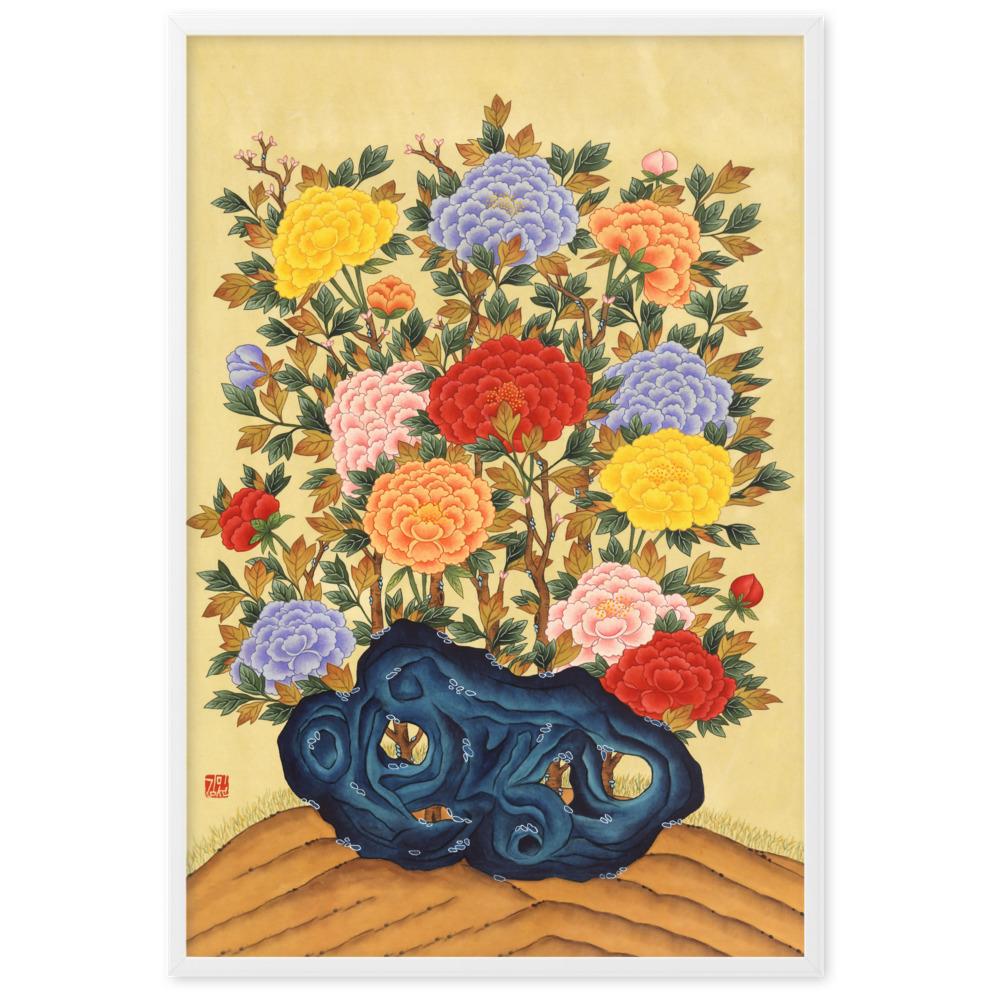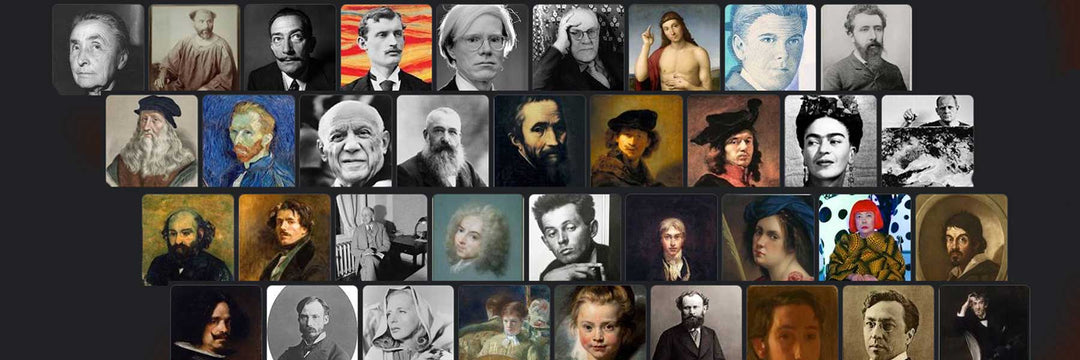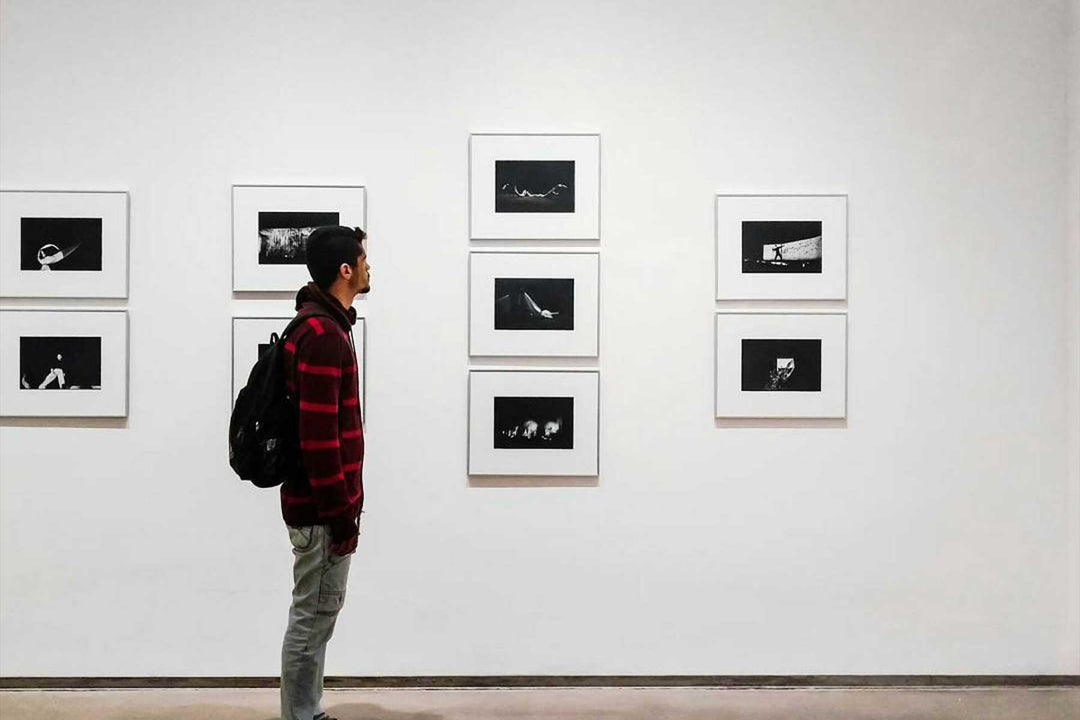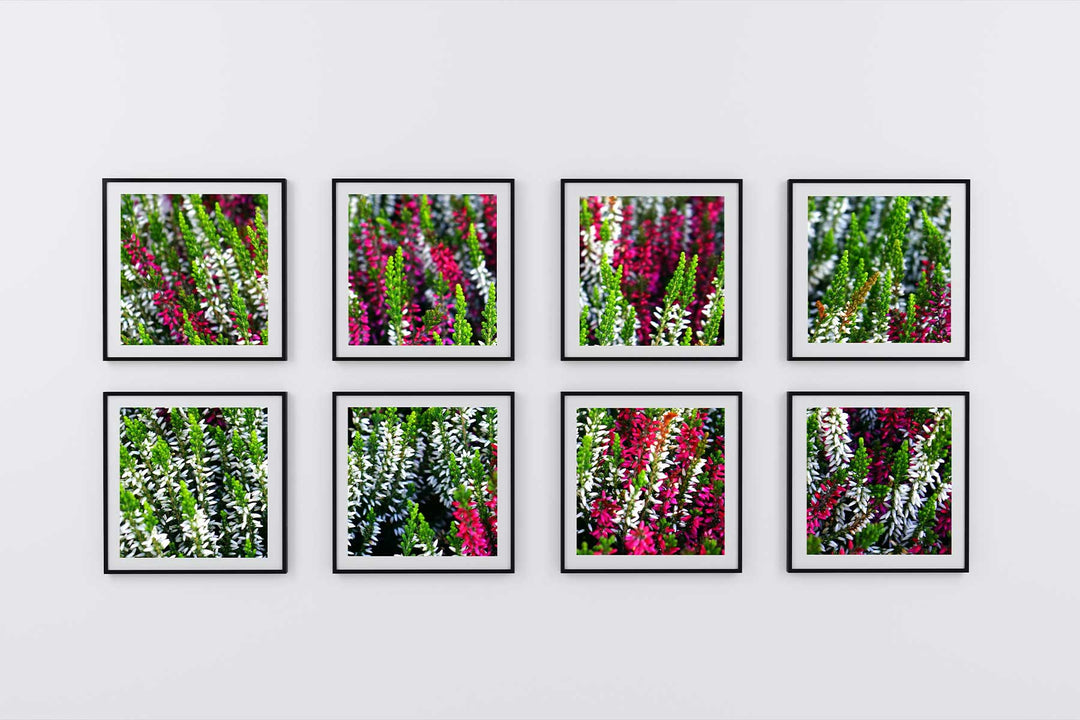Summary by Vincent van Gogh
Renowned artist Vincent van Gogh, often referred to as a tortured artist, strove to convey his emotional and spiritual state in each of his artworks. Although he only sold one painting during his lifetime, Vincent van Gogh is now one of the most famous artists of all time. His canvases are characterized by densely applied, visible brushstrokes in a vibrant and lush color palette, emphasizing Van Gogh's personal expression in painting. Each painting immediately conveys how the artist saw each scene, interpreted through his eyes, mind and heart. This highly idiosyncratic and emotionally moving style has significantly influenced artists and art movements throughout the 20th century and to this day, and will ensure that Vincent van Gogh's importance extends far into the future.
Services
🎨 Van Gogh's dedication to articulating the inner spirituality of man and nature led to a fusion of style and content, resulting in dramatic, imaginative, rhythmic and emotional canvases. These paintings convey much more than just the external appearance of the subject in question.
🎨 Although his mental instability caused much unrest throughout his life, it was also the driving force behind the emotional portrayals of those around him. Each of his works was imbued with a deeper psychological reflection and resonance.
🎨 Van Gogh's unstable personal temperament became synonymous with the romantic image of the troubled artist. His self-destructive talent resonated in the lives of many artists in the 20th century.
🎨 Van Gogh used an impulsive, gestural painting technique and symbolic colors to express subjective emotions. These methods and practices shaped many later modern art movements, from Fauvism to Abstract Expressionism.
Important works of art by Vincent van Gogh
The Potato Eaters, 1885
Oil on canvas - The Van Gogh Museum, Amsterdam
Reprinted at artlia: The Katoffelesser 1885
This early canvas is considered Van Gogh's first masterpiece. During his stay among the farmers and workers in Nuenen in the Netherlands, Van Gogh tried to portray the people and their lives truthfully. By rendering the scene in a somber palette, he reflected the dreary living conditions of the farmers and used ugly models to further illustrate the impact of hard physical labor on these workers. This effect is enhanced by the use of loose brushstrokes to describe the faces and hands of the farmers as they gather around the single, small lantern and eat their meager meal of potatoes. Despite the striking nature of the scene, the painting was not considered successful until after Van Gogh's death. At the time this work was painted, the Impressionists had already dominated the Parisian avant-garde with their bright palette for over a decade. It is therefore not surprising that Van Gogh's brother Theo found it impossible to sell paintings from his brother's period. Nevertheless, this work demonstrates not only Van Gogh's commitment to depicting emotionally and spiritually charged scenes in his art, but also the ideas he followed throughout his career.

The Courtesan (after Eisen), 1887
Oil on canvas - The Van Gogh Museum, Amsterdam
During his stay in Paris, Van Gogh was exposed to numerous artistic styles, including Japanese ukiyo-e woodblock prints. These prints were not available in the West until the mid-19th century. Van Gogh collected works by Japanese ukiyo-e masters such as Hiroshige and Hokusai and claimed that these works were just as important as works by European artists such as Rubens and Rembrandt. Van Gogh was inspired by a reproduction of a print by Keisai Eisen that appeared on the cover of Paris Illustré magazine in May 1886. Van Gogh enlarged Eisen's image of the courtesan and placed her against a contrasting gold background surrounded by a lush water garden, based on landscapes from other prints he owned. This particular garden is populated by frogs and cranes, both of which refer to prostitutes in colloquial French. While the stylistic features displayed in this painting, particularly the bold, dark contours and bright fields of color, later defined Van Gogh's mature style, he also made the work his own. By working in color rather than a woodcut, Van Gogh was able to soften the work and rely on visible brushstrokes to give depth to the figure and its surroundings, creating a dynamic tension across the surface that was not present in the original print.
Café terrace at night, 1888
Oil on canvas - Kröller-Muller Museum, Otterlo
Reprinted at artlia: Café terrace in the evening
This was one of the scenes Van Gogh painted during his stay in Arles and a painting in which he made use of its powerful nighttime background. By using contrasting colors and tones, Van Gogh achieved a luminous surface that pulsates with inner light despite the darkening sky. The compositional directions all point to the center of the work, drawing the eye along the sidewalk as if the viewer is strolling through the cobblestone streets. The café still exists today and is a "pilgrimage site" for Van Gogh fans visiting the south of France. In a letter to his sister, he described this painting by saying, "Here you have a night painting with no black, with nothing but beautiful blues and purples and greens, and in this setting the illuminated area turns itself sulfur yellow and lemon green. It amuses me enormous to paint the night on the spot..." Painted on the street at night, Van Gogh reproduced the scene directly from his observations, a practice he adopted from the Impressionists. Unlike the Impressionists, however, he not only recorded the scene as his eye saw it, but also gave the image a spiritual and psychological tone that reflected his individual and personal reaction. The brush strokes vibrate with the excitement and joy that Van Gogh felt while painting this work.
Sunflowers, 1888
Oil on canvas - The National Gallery, London
Reprinted at artlia: sunflowers
Van Gogh's Sunflower series was intended to decorate the room intended for Gauguin in the "Yellow House", his studio and apartment in Arles. The lush brushstrokes created the texture of the sunflowers, and Van Gogh used a wide range of yellows to describe the flowers, in part due to newly invented pigments that made new colors and tones possible. Van Gogh used the sunny hues to express the full lifespan of the flowers, from the full bloom of bright yellow to the withering and dying blossoms of melancholic ocher. The traditional painting of a bouquet of flowers was given new impetus by Van Gogh's experiments with line and texture, giving each sunflower the transience of life, the brightness of the Provençal summer sun, and the artist's mindset.
The Bedroom, 1889
Oil on canvas - The Van Gogh Museum, Amsterdam
Reprinted at artlia: The bedroom
Van Gogh's Bedroom shows his living quarters at 2 Place Lamartine, Arles, known as the 'Yellow House'. It is one of his most famous images. His use of bold and vibrant colors to represent the skewed perspective of his room demonstrated his liberation from the muted palette and realistic depictions of the Dutch art tradition, as well as the pastel tones often used by the Impressionists. He worked intensively on the motif, colors and arrangement of this composition and wrote many letters to Theo about it: "This time it's just my bedroom, here the color should do everything and give things a grander style through its simplification, here it should be calm or generally suggest sleep. In other words, looking at the picture should quiet the brain, or rather the imagination." While the bright yellows and blues may initially seem to signal restlessness, the bright colors are reminiscent of a sunny summer day, which is what Van Gogh intended. This personal interpretation of a scene, in which specific emotions and memories determine the composition and color palette, is an important contribution to modern painting.

Self-portrait with bandaged ear, 1889
Oil on canvas - The Courtauld Gallery, London
After cutting off part of his left earlobe during a manic attack in Arles, Van Gogh painted Self-Portrait with a bandaged ear while recovering and reflecting on his illness. He believed that painting would help bring balance back to his life, demonstrating the important role that artistic creation played for him. The painting testifies to the artist's renewed strength and control in his art, as the composition is depicted with unusual realism, with all facial features clearly modeled and careful attention paid to the different textures of skin, fabric and wood. The artist stands in front of an easel with a mostly blank canvas and a Japanese print hanging on the wall. The loose and expressive brushstrokes typical of Van Gogh are clearly visible; the strokes are both choppy and meandering, sometimes becoming soft and diffuse, creating tension between otherwise clearly marked boundaries. The bold outlines of his coat and hat mimic the linear quality of the Japanese print behind the artist. At the same time, Van Gogh used the technique of impasto, i.e. the continuous application of wet paint, to develop a richly textured surface that enhances the depth and emotional power of the canvas. This self-portrait, one of many Van Gogh created throughout his career, has an intensity unparalleled in its time, evident in the candid way in which the artist depicts his self-inflicted wound, as well as in the evocative manner in which he the scene reproduces, is expressed. Combining influences as diverse as the loose brushstrokes of the Impressionists and the strong contours of Japanese woodcuts, Van Gogh achieved a truly unique form of expression in his paintings.
Starry Night, 1889
Oil on canvas - The Museum of Modern Art, New York
Reprinted at artlia: Starry Night, Van Gogh
The Starry Night is often considered Van Gogh's highlight. Unlike most of his works, Starry Night was painted from memory rather than in the landscape. The emphasis on inner, emotional life is clearly evident in his swirling, turbulent depiction of the sky - a radical departure from his earlier, more lifelike landscapes. Here Van Gogh followed a strict principle of structure and composition, in which the forms are distributed in precise arrangement across the canvas surface to create balance and tension amid the swirling torsion of the cypress trees and the night sky. The result is a landscape represented by curves and lines, its apparent chaos undermined by a rigorous formal arrangement. The spirituality that Van Gogh found in nature is impressively conveyed in Starry Night. The painting is famous for pushing painting beyond depicting the physical world.

Church of Auvers, 1890
Oil on canvas - Musée d'Orsay, Paris
After leaving the sanatorium at Saint-Rémy in May 1890, Van Gogh traveled north to Auvers, outside Paris. The Church of Auvers is one of the most famous images from the last months of Van Gogh's life. He gave the landscape movement and emotion by depicting the scene with a palette of vividly contrasting colors and brushstrokes that guide the viewer through the painting. Van Gogh distorted and flattened the church's architecture, casting it in its own shadow, reflecting his complex relationship with spirituality and religion. Van Gogh gives the impression that true spirituality is found in nature and not in man's buildings. The influence of Japanese woodblock art is clearly visible in the thick dark contours and flat color fields of the roofs and landscape, while the visible brushstrokes of the Impressionists are elongated and emphasized. The use of the church's acidic tones and darkness alludes to the impending spiritual unrest that ultimately culminated in Van Gogh's suicide. This sense of instability plagued Van Gogh throughout his life, imbuing his works with a unique blend of charm and excitement.

Paul-Ferdinand Gachet, 1890
Oil on canvas - Private collection
Dr. Gachet was the homeopathic doctor who treated Van Gogh after his release from Saint-Rémy. The artist found a personal connection in the doctor and wrote to his sister: "I have found a true friend in Dr. Gachet, something like another brother, we are so similar physically and mentally." Van Gogh shows Gachet sitting at a red table with two yellow books and a thimble in a vase near his elbow. The doctor looks over the viewer, his eyes conveying a sense of inner sadness that reflects not only the doctor's condition, but Van Gogh's as well. Van Gogh focused the viewer's attention on depicting the doctor's expression by surrounding his face with the subtly varying shades of blue of his jacket and the hills of the background. Van Gogh wrote to Gauguin that he wanted to create a truly modern portrait, one that would capture "the heartbreaking expression of our time." By portraying Gachet's expression through a mix of melancholy and gentleness, Van Gogh created a portrait that has impacted viewers since its creation. A recent owner, Ryoei Saito, even claimed that he planned to have the painting burned with him after his death because he was so moved by the image. The intensity of emotion Van Gogh put into every brushstroke is what has made his work so captivating to viewers and inspired countless artists and people over the decades.
Biography of Vincent van Gogh

His childhood: Vincent van Gogh, who was born into a religious Dutch Reformed family in the southern Netherlands, showed unstable moods in his first years of life but initially had no interest in art. During his time in two boarding schools he excelled in languages. In 1868 he dropped out of formal schooling.
Early education: In 1869, Van Gogh began an apprenticeship at the international art dealer Goupil & Cie in Paris, where he worked for almost a decade. He corresponds with his brother Theo, who also becomes an art dealer. In 1880 Vincent left Goupil & Cie, tried a religious career and later, with financial support from Theo, decided to pursue art.
Infatuation and challenges: Facing great poverty in 1881, Van Gogh moved back in with his parents and taught himself to draw. He fell in love with his cousin Kee Vos-Stricker, which led to family conflicts. With Theo's support, he moved to The Hague, studied with Anton Mauve and dealt with rural life in his art.
Relationship with Sien: In 1882, Van Gogh took in Clasina Maria Hoornik, a destitute young woman he called Sien, and her children. His support for Sien caused tensions with friends, family and patrons, even though she was the model for many of his works.
ripening time: In 1884 Van Gogh moved to Nuenen, Netherlands and focused on depicting workers and the poor. There were personal arguments and disputes with Theo. After his father's death in 1885, he completed important works such as "The Potato Eaters".
The transition to Paris and impressionism: Van Gogh's move to Paris in 1886 brought him into contact with the Impressionist artists, including Monet, Pissarro and Degas. He studied with Fernand Cormon and chose a lighter color palette influenced by the Impressionists.
Late years and mental struggles: In his final years, Van Gogh's mental health deteriorated, leading to self-harm. In 1889 he was admitted to a psychiatric institution in Saint-Rémy, where he created many famous works. After leaving the clinic, he moved to Auvers-sur-Oise, but financial worries and depression increased.
Last days: On July 27, 1890, Van Gogh shot himself in a wheat field and died two days later. His last words were: "The sadness will last forever".
legacy: Van Gogh's influence on art history is profound. Movements such as Fauvism and German Expressionism adopted his spiritually inspired color scheme. The Abstract Expressionists of the mid-20th century adopted his expressive brushwork to convey emotion. Even the Neo-Expressionists of the 1980s owe a lot to his color palette and brushstrokes. In addition to art, his life also inspired music and films such as "Lust for Life." Although he only sold a single painting during his lifetime, Van Gogh left behind 900 paintings and 1,100 drawings and sketches, with his brother Theo inheriting most of his work.










